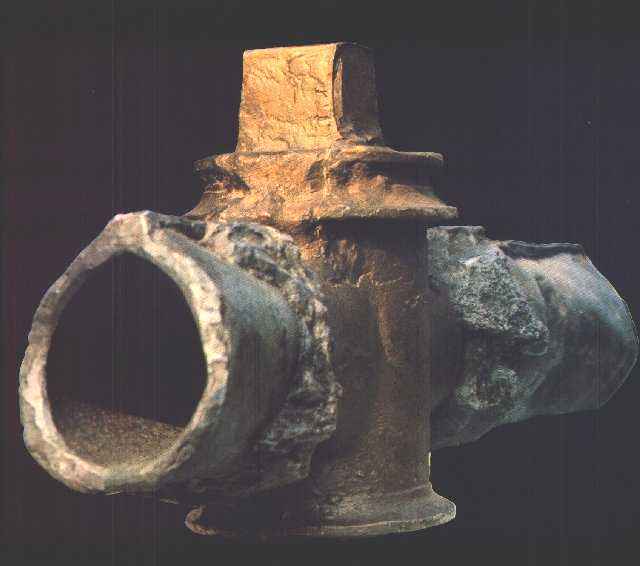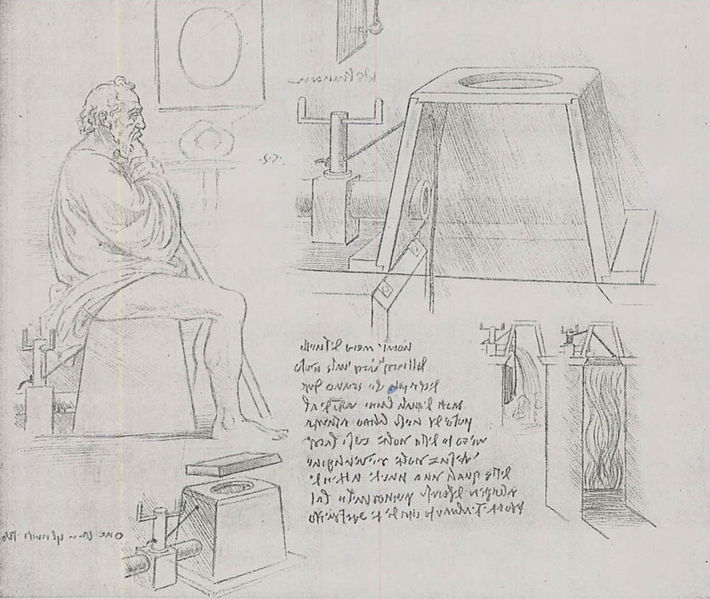Since the Ancient times, the men knew how to regulate water, either with stones or branches and trunks from the trees.
Egyptians, Greeks and other cultures were able to drive the water from rivers and fountains for public use or irrigation.
 But the Romans were the real
developers of canal systems. They bring water form fountains and rivers to the villages, sometimes at long distances and saving important obstacles by means of aqueducts.
But the Romans were the real
developers of canal systems. They bring water form fountains and rivers to the villages, sometimes at long distances and saving important obstacles by means of aqueducts.
The valves were plug or stopcock type, made in bronze, nowadays ASTM B-67. This material was well known by the master of the "Collegia Fabrorum". It was rich in lead, no cracked, anti-corrosive, ductile,
able to weld to the pipes of bronze or lead and good friction properties which facilitated the rotation of the plug.
The parts of the valve were a body, a holed plug, a bottom, and a long levy for turning the plug. Sometimes a pin was forced with a hammer into the valve, and then the plug could turn but not be removed.
That was a way to avoid taking out the plug for defrauding water which seemed to be a widespread practice at these times as some holes found in the inlet of the valves.
At several Mediterranean towns were found small valves, all of them had similar design, such as in Rabat, Djemila, Istambul, Avarches, Augusta (where there was also found butterfly valves
as taps) and Naples (were the plugs were cylindric).
Romans used a primitive diaphragm valve, made of crude leather that was manually closed over a weir, to control flow and temperature of household bath water.
There is also evidence of the use of angular valves, mixing valves and also check valves for avoiding back flow.
 During the Middle Ages there were not any very important designing progresses. It was during the Renaissance when the construction of canals, irrigation systems and other hydraulic works included
more sophistificated valves. Leonardo Da Vinci left good samples in his sketches.
During the Middle Ages there were not any very important designing progresses. It was during the Renaissance when the construction of canals, irrigation systems and other hydraulic works included
more sophistificated valves. Leonardo Da Vinci left good samples in his sketches.
 The modern history of the valve industry starts with the Industrial Revolution. At 1705 Thomas Newcomen invented the first steam machine. It needed
valves able to keep and regulate the steam at high pressure. As new inventors as James Watt created new machines, they also improve the design of the valves.
But it was until many years later when the production of valves was at great scale, independently of particular projects.
The modern history of the valve industry starts with the Industrial Revolution. At 1705 Thomas Newcomen invented the first steam machine. It needed
valves able to keep and regulate the steam at high pressure. As new inventors as James Watt created new machines, they also improve the design of the valves.
But it was until many years later when the production of valves was at great scale, independently of particular projects.
Bibliography
- Togliard
- "Rome engineering and industry" - Enzo Fabio y Luca Fassitelli. Ed. Petrolieri d'Italia
